Detection and measurement of clinically meaningful visual field progression in clinical trials for glaucoma
- PMID: 27773767
- PMCID: PMC5313392
- DOI: 10.1016/j.preteyeres.2016.10.001
Detection and measurement of clinically meaningful visual field progression in clinical trials for glaucoma
Abstract
Glaucomatous visual field progression has both personal and societal costs and therefore has a serious impact on quality of life. At the present time, intraocular pressure (IOP) is considered to be the most important modifiable risk factor for glaucoma onset and progression. Reduction of IOP has been repeatedly demonstrated to be an effective intervention across the spectrum of glaucoma, regardless of subtype or disease stage. In the setting of approval of IOP-lowering therapies, it is expected that effects on IOP will translate into benefits in long-term patient-reported outcomes. Nonetheless, the effect of these medications on IOP and their associated risks can be consistently and objectively measured. This helps to explain why regulatory approval of new therapies in glaucoma has historically used IOP as the outcome variable. Although all approved treatments for glaucoma involve IOP reduction, patients frequently continue to progress despite treatment. It would therefore be beneficial to develop treatments that preserve visual function through mechanisms other than lowering IOP. The United States Food and Drug Administration (FDA) has stated that they will accept a clinically meaningful definition of visual field progression using Glaucoma Change Probability criteria. Nonetheless, these criteria do not take into account the time (and hence, the speed) needed to reach significant change. In this paper we provide an analysis based on the existing literature to support the hypothesis that decreasing the rate of visual field progression by 30% in a trial lasting 12-18 months is clinically meaningful. We demonstrate that a 30% decrease in rate of visual field progression can be reliably projected to have a significant effect on health-related quality of life, as defined by validated instruments designed to measure that endpoint.
Keywords: Clinical trials; Glaucoma; Intraocular pressure; Neuroprotection; Perimetry; Progression.
Copyright © 2016 Elsevier Ltd. All rights reserved.
Figures



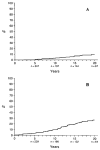


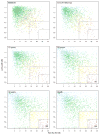




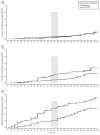
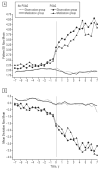




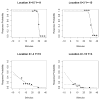





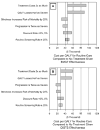
References
-
- AAO. Preferred Practice Pattern® Guidelines. Primary Open-Angle Glaucoma. American Academy of Ophthalmology; San Francisco, CA: 2010.
-
- Adams CW, Bullimore MA, Wall M, Fingeret M, Johnson CA. Normal aging effects for frequency doubling technology perimetry. Optom Vis Sci off Publ Am Acad Optom. 1999;76:582–587. - PubMed
-
- Administration, U.S.S. Disability evaluation under Social Security.
-
- AGIS. The advanced glaucoma intervention study (AGIS): 7. The relationship between control of intraocular pressure and visual field deterioration. Am J Ophthalmol. 2000;130:429–440. - PubMed
-
- AGIS. The advanced glaucoma intervention study (AGIS): 12. Baseline risk factors for sustained loss of visual field and visual acuity in patients with advanced glaucoma. Am J Ophthalmol. 2002;134:499–512. - PubMed
Publication types
MeSH terms
Substances
Grants and funding
LinkOut - more resources
Full Text Sources
Other Literature Sources
Medical

